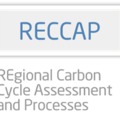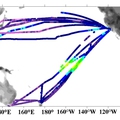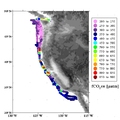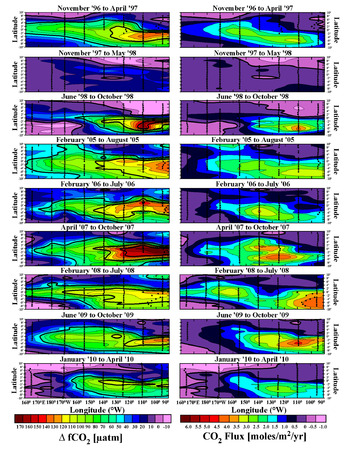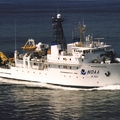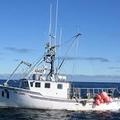Equatorial Pacific uwpCO2
The CO2 group of NOAA’s Pacific Marine Environmental Laboratory (PMEL) has been monitoring sea surface CO2 concentrations in the equatorial Pacific since 1982. This is a particularly dynamic area exhibiting significant variation of CO2 concentrations, both interannually due to the effect of periodic El Niño events, and seasonally due to the changes in wind strength and upwelling patterns. By measuring the partial pressure of CO2 (pCO2) in both the sea surface and atmosphere, along with sea surface temperature, pressure, and wind speed, the flux of CO2 into or out of the ocean can be calculated, affording a broader understanding of how this important greenhouse gas behaves in the ocean.
The surface ocean CO2 concentration in most of the global oceans is less than the CO2 concentration in the air above, resulting in a net flux of CO2 into the oceans. The equatorial Pacific is an exception. In this region, strong trade winds bring CO2-enriched water to the surface, and the net flux of CO2 is out of the ocean into the atmosphere. When an El Niño event occurs, the easterly trade winds in the western and central equatorial Pacific weaken and sometimes reverse. This reversal drives warm surface water from the western Pacific eastward, leading to the development of unusually warm sea surface temperatures east of the international dateline. The lessened winds also bring less CO2-enriched water to the surface. The flux of CO2 out of the ocean into the atmosphere is dramatically diminished during an El Niño event.
Underway pCO2 has been routinely measured along 165°E, 180, 170°W, 155°W, 140°W, 125°W, 110°W, and 95°W between 10°N and 10°S on NOAA ships servicing the Tropical Atmospheric Ocean (TAO) Array buoys since 1992.



